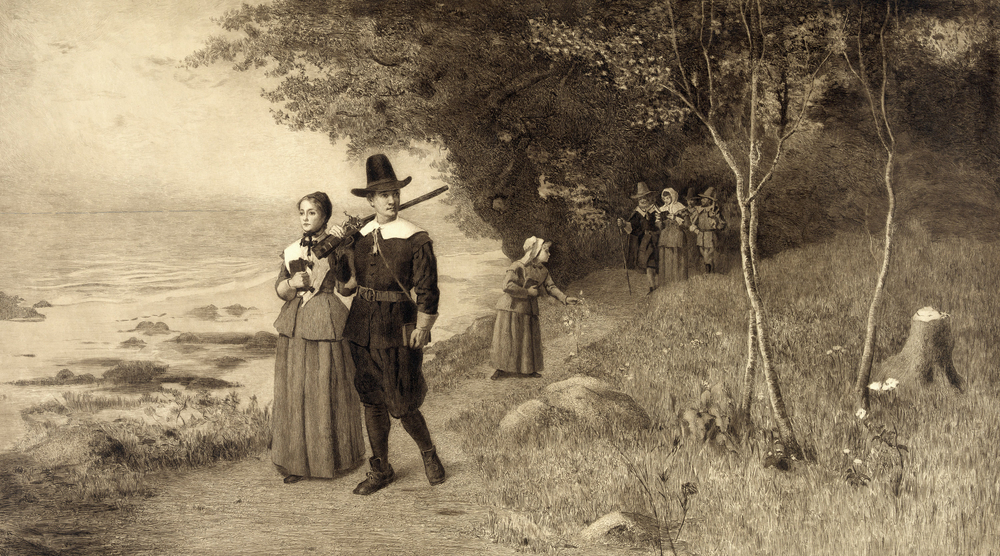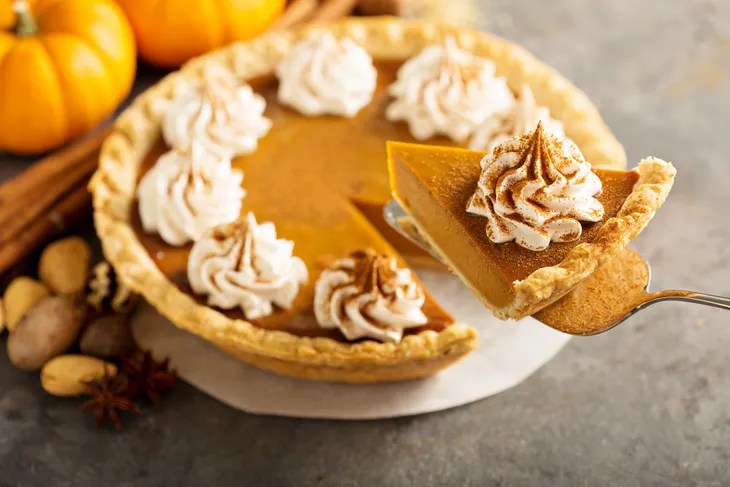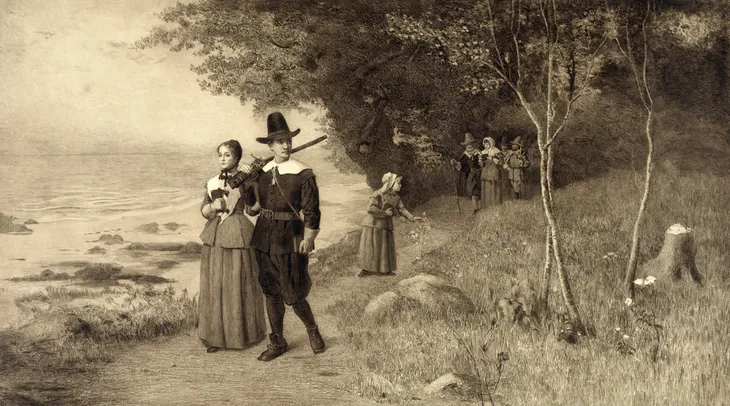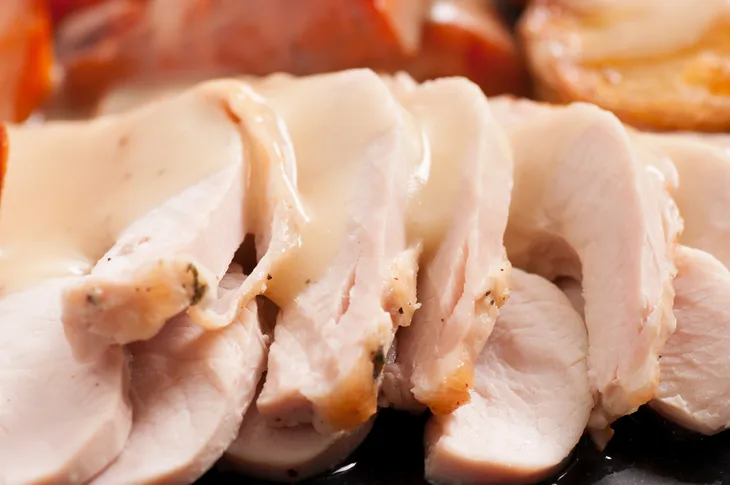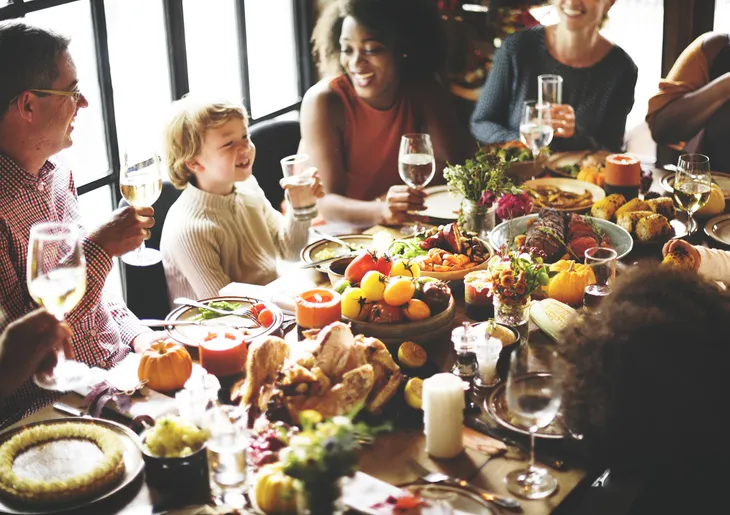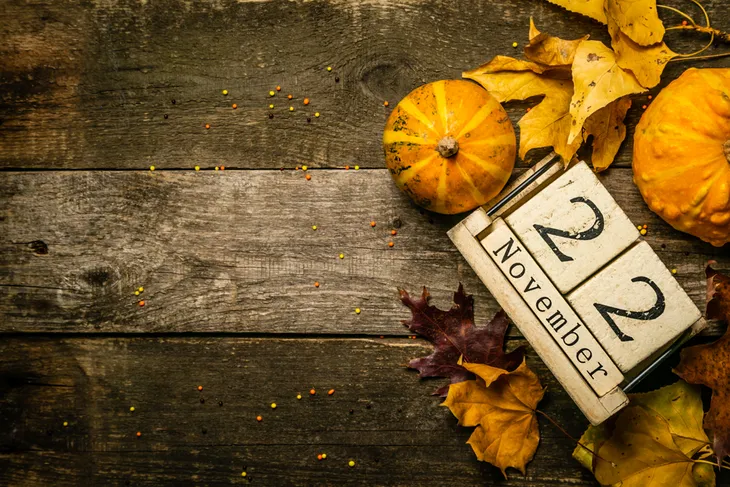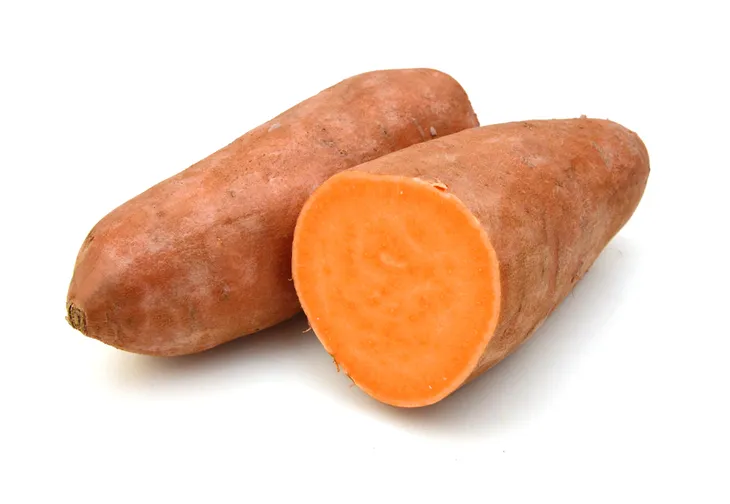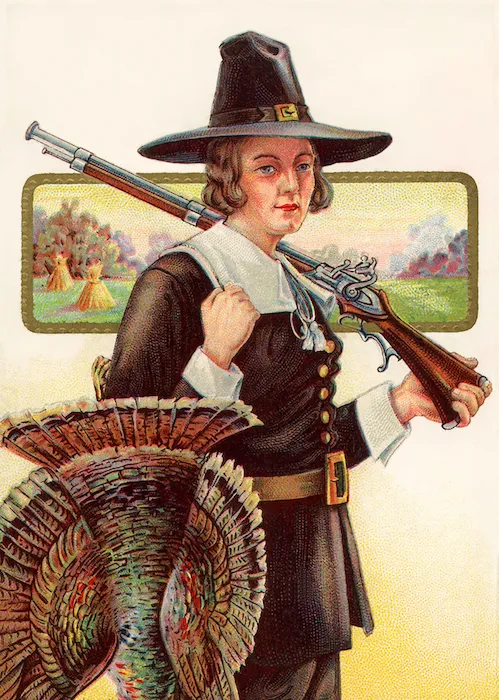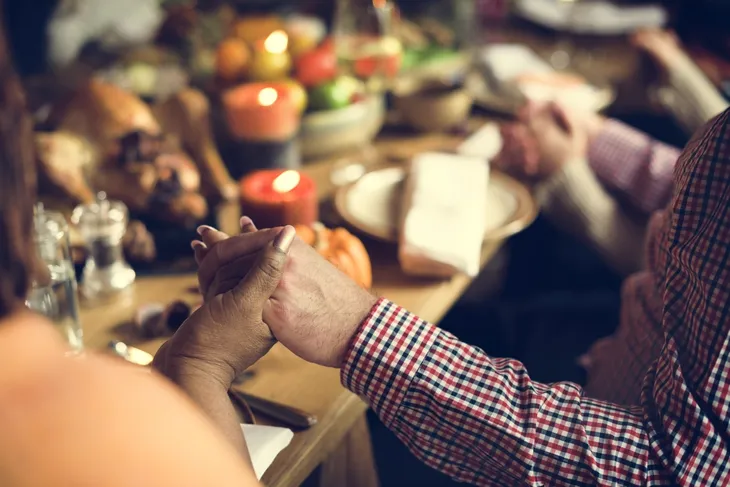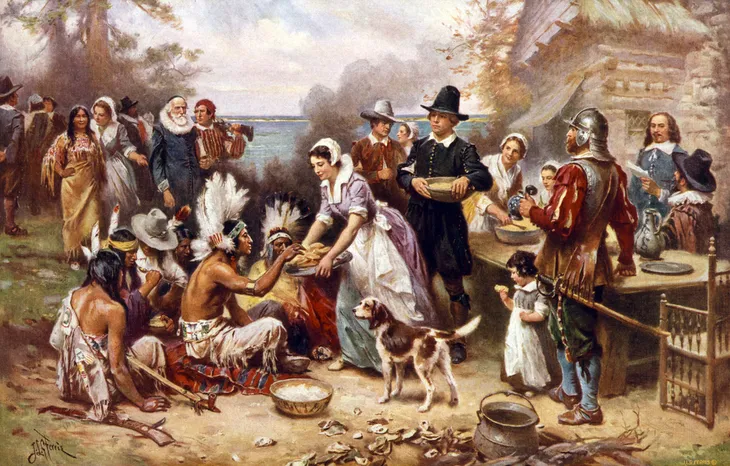Thanks to technology, it’s really easy for information spread. This is both a blessing and a curse. We have such easy access to information which comes with a lot of perks, but the downside is that there’s an overload of information out there and virtually anyone can publish or share anything on the internet. So, it’s hard to know what is true and what isn’t. Even without the internet, misinformation and misconception is a common thread among historical events because none of us were there to know if what’s being said is true or not!
Since Thanksgiving is such a traditional holiday that has been celebrated throughout history, a lot of time has gone by for information to catch on and spread around. It’s now hard to know what is true and what isn’t, especially since some of it is even taught to us in school! Before heading over to your family Thanksgiving dinner, read up on some of the most common myths are surrounding this holiday and find out and the truth is behind them. (You should also check out these Interesting Facts About Thanksgiving Day).
1. Turkey Makes You Sleepy
We’ve all heard the myth that turkey makes us sleepy, but is this really true? The answer is not really. What makes us sleepy is the amino acid tryptophan which is found in turkey, says Kristin Kirkpatrick, a registered dietitian and director of wellness nutrition services at the Cleveland Clinic to Healthline. Technically, it is the turkey because tryptophan is found in turkey, but it’s also found in many other foods, like chicken. In fact, Dawn Jackson Blatner, RD, LDN, an American Dietetic Association spokeswoman told WebMD that turkey has less tryptophan than chicken!
You won’t get any more sleepy from turkey than you would from eating a chicken breast at a barbeque in the summer. If you find that you’re really sleep after a Thanksgiving dinner, it’s likely not from eating too much turkey. It’s more likely from eating such a large quantity of carb-heavy food or the alcohol (if consumed).
2. Is It Really Pumpkin?
According to Healthline, the truth is that most store-bought pumpkin pies probably contain more squash than they do pumpkin. This is because canned pumpkin pie filling is main ingredient and it’s mainly made from squash. You’re probably thinking, well that’s not all that strange because pumpkin is technically classified as a squash. This is also true.
The fact of the matter is that pumpkin puree is less stringy and sweet than an actual pumpkin. “It’s probably made from a pumpkin cousin, such as the squashes: butternut, Hubbard, Boston Marrow, or Golden Delicious,” writes Healthline. While it’s not totally devastating news, it’s likely something the average person did not know. If you want to get the most pure form of canned pumpkin puree. You could also try to make your own pumpkin pie made from a whole pumpkin that you cut, cleaned, steamed, and scraped. A forewarning, this route is much more time consuming!
3. The Settlers Weren’t Called Pilgrims
We often refer to the settlers who were present at the first Thanksgiving feast as Pilgrims but that’s a term we coined ourselves. They did not call themselves Pilgrims. They referred to themselves as “Saints” or “Separatists,” says History.com. It was early Americans who came up with the term “pilgrim” to describe all early colonists. “It wasn’t until the 20th century that it was used exclusively to describe the folks who landed on Plymouth Rock,” explains Reader’s Digest.
4. An Annual Historical Event
Today, Thanksgiving is an annual holiday celebrated by both Canadians and Americans (albeit on different dates). The assumption around this is that we are all merely carrying on a historical tradition that dated all the way back to 16oos. However, Reader’s Digest points out that there is actually no evidence that the Pilgrims celebrated again in 1622. In fact, there’s even speculation by some about whether or not Native Americans were even present at Thanksgiving. Even if they were, their relationship deteriorated quickly after.
Thanksgiving didn’t become an official holiday until Sarah Josepha Hale, a prominent writer and editor in the 1800s (she wrote the famous Mary Had a Little Lamb poem), lobbied state and federal officials to declare it as a recurring national holiday. She believed it would help “ease growing tensions and divisions between the northern and southern parts of the country,” says History.com. Her efforts paid off because by 1854 more than 30 states and U.S. territories had a dedicated day for Thanksgiving.
 Library of President Franklin D. Roosevelt
Library of President Franklin D. Roosevelt5. They Ate Turkey
This is arguably one of the biggest Thanksgiving myths of all! We eat foods like turkey, stuffing, mashed potatoes, cranberry sauce, and pie on Thanksgiving, but there’s no evidence that these foods were present at the Thanksgiving feast back in 1621. In fact, there’s no record of what was eaten at this “first Thanksgiving.” History.com believes it was most likely foods like lobster, seal, deer, and swan which was prepared with cooking methods and spices used by the Native Americans in the area.
“Because the Pilgrims had no oven and the Mayflower’s sugar supply had dwindled by the fall of 1621, the meal did not feature pies, cakes or other desserts, which have become a hallmark of contemporary celebrations,” adds the source.
6. White Meat is Healthier
Once the family is all seated and the food is finally being served, the question we’ve all had to answer at least one or twice before is, “white or dark meat?” Many people believe that white meat is actually healthier than dark meat because it has fewer calories and less fat. But is this actually true or is this just one of those misconceptions that has just carried on without anyone actually questioning its validity?
According to Women’s Health, “the difference between white and dark meat has to do with more than just fat and calories…It actually depends on the type of muscle that meat contains. The more myoglobin (the oxygen-binding and transporting protein found in muscle tissue), the darker the color of the meat.” Since chickens and turkeys use their legs to walk and run, their leg and thigh muscles need more oxygen. As a result, they contain more myoglobin, says Meme Inge, RDN when talking to the source.
While it’s true that dark meat has more calories and saturated fat than white meat, both are considered healthy because both are primarily made of monounsaturated fats. Similar to white meat, dark meat contains lots of vitamins and minerals. Inge told Women’s Health that dark meat is also a great source of “vitamin B6, zinc, niacin, selenium, and phosphorus in addition to iron, riboflavin, and pantothenic acid, which your body needs to synthesize and metabolize protein, carbs, and fat.”
It seems the biggest difference between the two is their flavor. Dark meat tends to have a richer, juicer flavor, while white meat tends to be more dry. If you look at it this way, people who eat dark meat might be less inclined to load on those sugary, salty sauces making it a healthier choice. Either way, both options provide fairly similar health benefits.
7. Thanksgiving is About Coming Together
As children learning about history, we’re taught that Thanksgiving was a peaceful harvest celebration between two communities — the Pilgrims and the Native Americans. However, the relationship between the Separatists and the Wampanoags was anything but! If it is true that they dined together in 1621, it might not have been willingly. “What followed that dinner was a few hundred years of violent colonization and oppression of Native people in what’s now America, the effects of which are still visible to this day,” writes Bustle.
8. It Likely Didn’t Happen in November
While the Americans celebrate Thanksgiving in November, it seems like Canadians are actually a little closer to when the original Thanksgiving feast actually took place. According to historian Richard Ehrlich, in November “the villagers were working to prepare for winter, salting and drying meat and making their houses as wind resistant as possible.” This means the feast was likely some time after the harvest had been brought in which would have been sometime between late September and middle of October.
9. Sweet Potatoes and Yams are the Same
People often confuse sweet potatoes and yams by using their names interchangeably or swapping them out in recipes thinking they are similar in taste and appearance. Not only are these two foods different vegetables, they aren’t even technically part of the same botanical family. In fact, they are only distantly related, says Healthline. Sweet potatoes (also known by the scientific name ipomoea batatas) are a starchy, root vegetable with a sweet taste. Healthline explains that they are thought to originate from Central or South America and despite their name, they’re only remotely related to potatoes. “Like a regular potato, the tuberous roots of the sweet potato are eaten as a vegetable. Their leaves and shoots are also sometimes eaten as greens,” writes the source. There are two different kinds of sweet potatoes, dark skinned, orange-fleshed sweet potatoes and golden-skinned, pale-fleshed sweet potatoes.
Yams (also known as Dioscorea) are also unique. When compared to sweet potatoes, Healthline notes that yams are less sweet and more starchy and dry. They can also grow much larger than sweet potatoes. Originating in Africa and Asia, this imported vegetable is rarely found in local grocery stores. If you do sweet one, you’ll know because they have some distinct characteristics. Yams are “cylindrical in shape with brown, rough, bark-like skin that is difficult to peel, but it softens after heating. The flesh color varies from white or yellow to purple or pink in mature yams,” adds the source.
10. Pilgrims Wore Big Hats and Buckles
We’ve all seen those illustrations of what the first Thanksgiving feast look like way back when the Pilgrims and Natives feasted together. In those pictures the Pilgrims are often drawn wearing large hats with buckles on them. Is this really what they looked like? According to Reader’s Digest, the answer is no. “None of the participants were dressed anything like the way they’ve been portrayed in art: the Pilgrims didn’t dress in black, didn’t wear buckles on their hats or shoes, and didn’t wear tall hats,” writes the source. “The 19th-century artists who painted them that way did so because they associated black clothing and buckles with being old-fashioned.”
11. It Was a Religious Occasion
American kids are taught in school that the Pilgrims traveled to the New World in search of religious freedom. This isn’t true. The Pilgrims did leave Britain looking for religious freedom, but they found it in Holland in the early 1600s, says the Washington Post. “The reason they wanted to come to the New World and establish a colony was to preserve their English identity and for economic reasons,” adds the source.
According to Reader’s Digest, it was anything but a solemn, religious occasion. The first Thanksgiving feast was “a three-day harvest festival that included drinking, gambling, athletic games, and even target shooting with English muskets (which, by the way, was intended as a friendly warning to the Indians that the Pilgrims were prepared to defend themselves).”
12. The Pilgrims and Natives Were Fast Friends
We are all taught about the history of Thanksgiving, but the truth is there’s very little evidence that the feast was held in 1621, and even less evidence that the Native Americans were even present at the time. If they were, some historians believe it was because “either members of the Wampanoag tribe, who lived nearby, heard the settlers firing warning shots toward their tribe, or because the Wampanoag leader was making a diplomatic visit to the settlers’ village,” writes Bustle.
